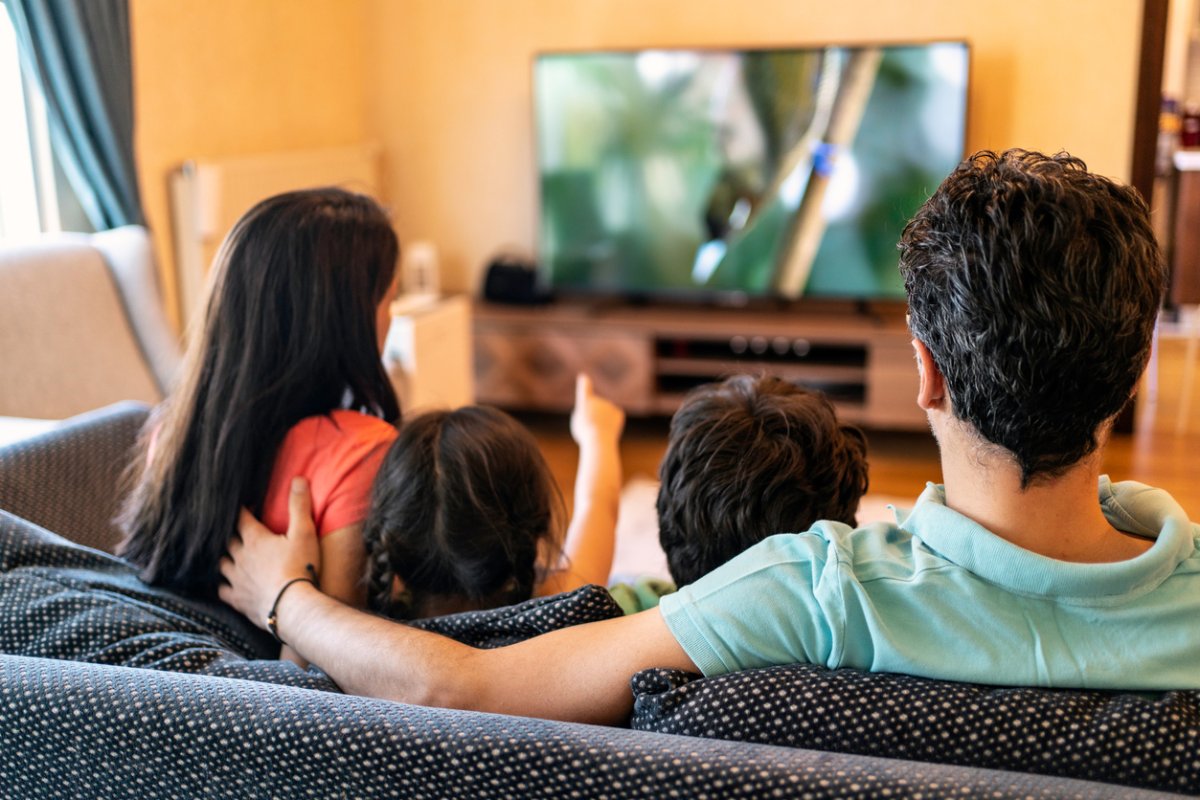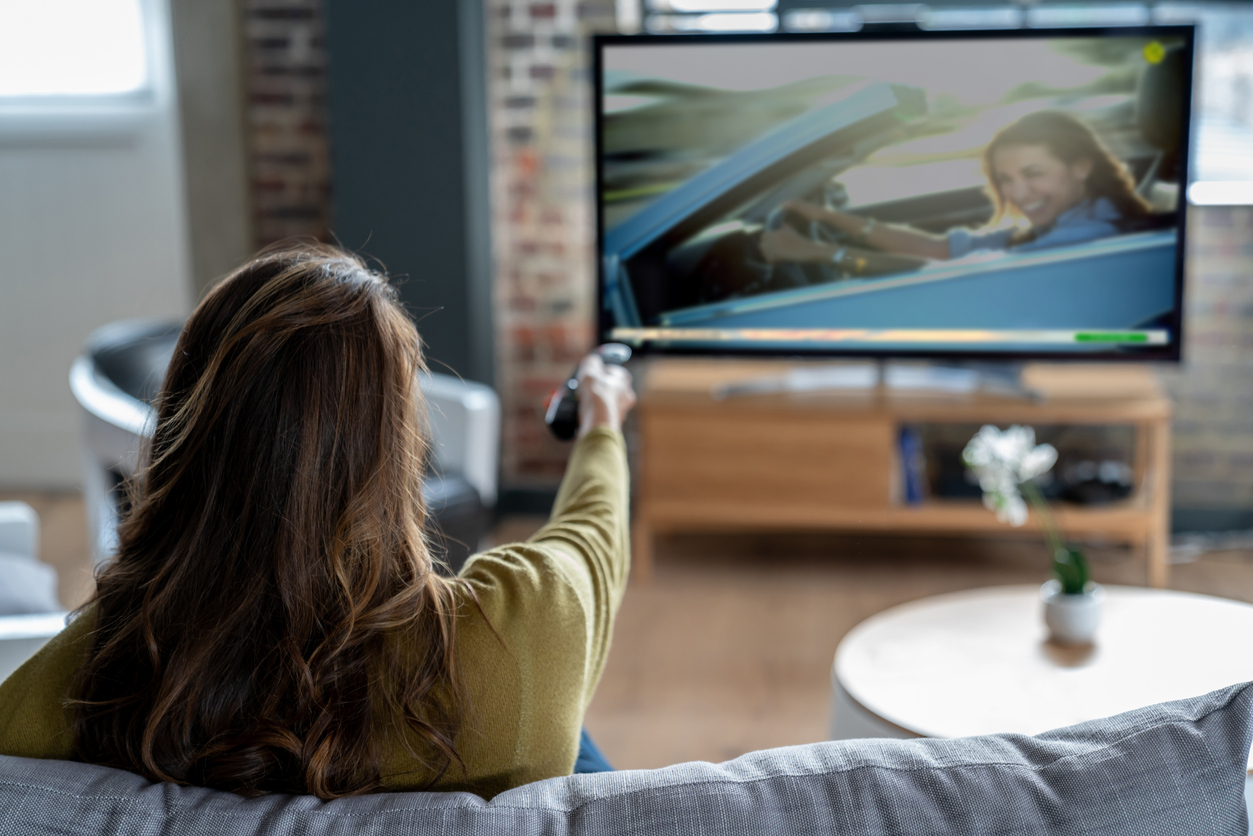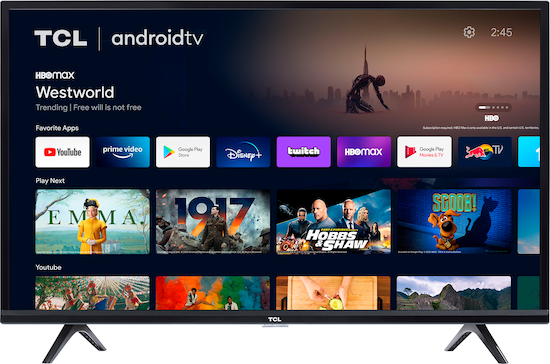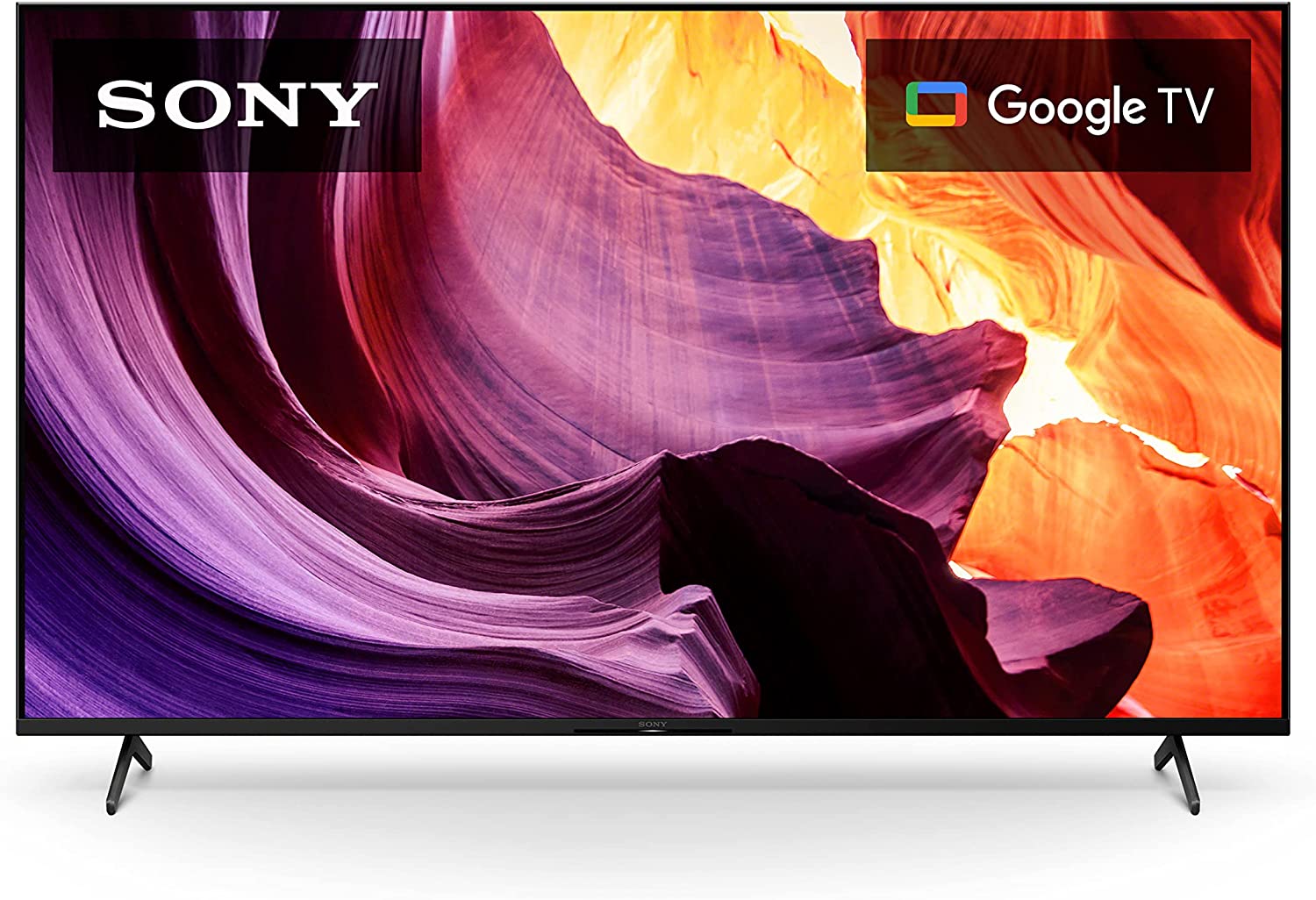

We may earn revenue from the products available on this page and participate in affiliate programs. Learn More ›
Q: My last TV was so small that I couldn’t clearly make out all of the details of my favorite shows. I don’t have eyesight problems, so I think the TV was too small. What size TV do I need?
A: The TV size you need depends on a few factors, including the viewing distance from the television and room size. Once you’ve calculated these, which TV you should buy becomes a much easier question to answer.
Of course, a television can always be bigger or smaller than recommended based on personal preference. Some people want to feel like they’re sitting in a movie theater, while others may prefer for their TV to double as decor by displaying artwork on the screen when not in use.
Chances are that if one TV is coming into a home, another one is going out. Dispose of old TVs responsibly by donating or recycling them. TVs contain hazardous materials that shouldn’t go in landfills. Local recycling centers are a good place to start, and the EPA also offers TV recycling resources.
Viewing distance is the most important factor in determining the ideal TV size for a room.
TV viewing distance is the single biggest factor when choosing a TV size. The ideal distance is a sweet spot in which the viewer can take in the entirety of the screen without seeing individual pixels, the dots of light that make up the picture.
In general, bigger TVs located closer to the viewer offer better picture quality and immersion. Not everyone wants to sit so close to their television, however, so the the TV size chart further below is a great starting point for viewing distance.
There’s also a balance to strike between viewing distance and TV size. Perhaps you dream of a large 75-inch TV in your cozy living room, but if that’s too big for the available space, the best size TV for you might be a smaller, higher-resolution TV.
Screen Size
How to measure TV size differs from how to measure other home electronics. TVs are measured on the angle from the top corner of one side of the screen to the bottom corner of the other side. When measuring the wall area where a TV will hang, it’s important to understand that a 75-inch TV doesn’t have a 75-inch width—it’s approximately 75 inches from corner to corner. The actual width and height of a 75-inch TV varies from model to model, though their screen should all be around 75 inches on the diagonal.
There are many standard TV screen sizes, with most ranging between 40 and 75 inches. A little outside of that range are small TVs, typically measuring 24 or 32 inches or smaller, and exceptionally large TVs that measure in at 80 or 85 inches. Between those extremes are the more common TV sizes of 40, 43, 50, 55, 65, 70, and 75 inches.
The most popular living room TV sizes are 55- to 65-inch models, while TVs under 45 inches are often used as secondary televisions in bedrooms or offices.
Most people have to decide whether they’re going to buy a model that’s slightly smaller or larger than their space can handle. A model that’s a little bigger than necessary will provide a higher-quality viewing experience, but it could dominate wall or floor space. Viewing habits can help determine which way to go, too. For those who predominantly watch movies, a larger screen will feel more like a movie theater. For those who predominantly watch sports, a smaller TV will make it easier to take in the whole screen and follow the action.
Resolution
TV resolution refers to the number of pixels on the screen. Higher resolutions offer a clearer picture. Each resolution has a fairly standard number of horizontal pixels (the first number) and vertical pixels (the second number), though there is some variation between brands and models. The most common resolutions include:
- 720p (HD): A 720p, or high-definition, TV has 1280 x 720 pixels on its screen. 720p TV screen sizes are often 32 inches and under. This resolution is best suited for online videos, like those found on YouTube.
- 1080p (FHD): 1080p, or full high-definition, TVs typically have 1920 x 1080 pixels. This resolution was once standard but has largely been replaced by 4K. However, 1080p TVs offer a good viewing experience for the price, making them a good budget pick for casual viewing and gaming.
- 4K (UHD): A 4K TV, or ultra high-definition TV, has 3840 x 2160 pixels. These TVs are now standard, and many newer series and movies are shot in 4K.
- 8K (UHD): Some of the newest models on the market are 8K TVs, which have 7580 x 4320 pixels. (These are also commonly referred to as UHD, but don’t confuse them with 4K TVs.) There’s currently very little content made in 8K, which makes these a less practical buy at this point. However, they’re an investment that will likely future-proof an entertainment setup for years to come.
Field of View
Field of view refers to the viewer’s viewing angle. An optimal TV field of view positions seating at a distance that allows the viewer to see the entire screen within a minimum of 30 degrees. Beyond that point, the viewer is forced to use their peripheral vision and miss some details on the screen’s edges. That field of view can work well for streaming episodic television and watching sports.
However, for those who often watch movies, a closer viewing distance that creates a 40-degree field of view offers a more immersive experience. As TV size increases, the best TV position will be further from the viewer to maintain the best field of view.
RELATED: Solved! This is How High to Mount Your TV on the Wall

TV size may be restricted if you have a media cabinet.
A media cabinet with an existing TV opening can limit screen size. In these cases, the method for measuring a TV’s size-to-distance ratio doesn’t strictly apply. Measure the cabinet opening on the diagonal and buy the largest TV you can for the size of the cabinet, but leave enough clearance around the TV to access rear or side connections.
There’s greater flexibility in TV size when using a TV stand or TV wall mount. Just remember that TV stands and cabinets are generally measured horizontally, while TVs themselves are measured diagonally. Check a TV’s overall dimensions to make sure it will fit on either.
TV mounts provide the greatest flexibility in size and viewing angle, and some adjustable mounts even tilt or telescope in and out. Make sure to get a mount compatible with your TV model. It not only has to be strong enough to hold the TV’s weight, but the brackets and screws also have to fit the TV. It’s usually easier to select a mount after selecting the TV.
Determine where you plan to install the TV to formulate the ideal size.
How to size a TV for a room comes down to measurements. Carefully measure the area where the TV will be installed. Double-check those measurements, remembering that TVs are measured on the diagonal. Next, measure the distance from the television to the optimum viewing point, such as a sofa or chair. Use the formula and TV size chart further below to calculate the best TV size and viewing distance.
Manufacturers recommend different viewing distances based on a TV’s resolution. These guidelines are a range which allows anywhere from 8 to 12 inches of flexibility for optimal viewing experiences. The basic rules of thumb are:
- 720p: 6 times the TV’s vertical screen height
- 1080p: 3 times the TV’s vertical screen height
- 4K: 1.5 times the TV’s vertical screen height
- 8K: 1.5 times the TV’s vertical screen height (can optionally be closer)
Calculating viewing distance for 8K TVs is a bit tricky. Start with 1.5 times the TV’s vertical screen height and then move closer by a few inches. There’s no perfect formula for these models, but the higher resolution means viewers can sit closer without getting a distorted picture.
However, there’s also room for preference. Some people don’t want to sit so close to the TV and some may prefer an inconspicuous model, but others may want a full cinematic experience. Buy a bigger or smaller TV based on personal preference and room, but make sure it will fit within its destined display space.
5.5 feet = 43-inch TV with 1080p Resolution

A 43-inch TV will typically be about 22.5 inches tall. Multiply 22.5 by 3, and the result is 67.5 inches. To turn inches into feet, divide 67.5 by 12, and the 43-inch TV should be about 5.6 feet from the viewer.
22.5 x 3 = 67.5 inches
67.5/12 = 5.625 feet
Our Recommendation: TCL 43″ Class 3-Series FHD LED Smart Android TV at Best Buy for $179.99
This smart 43-inch TCL model balances quality with price, offering a bright picture, simple setup, and great ease of use.
3.5 feet = 55-inch TV with 4K Resolution

A 55-inch TV will be around 28.3 inches tall. Multiply 28.3 by 1.5, and the result is 42.45 inches. Divide 42.45 by 12 to convert inches into feet, and the result is 3.5 feet. Remember that this is the minimum distance viewers can sit away from the screen and get a good view.
28.3 x 1.5 = 42.45 inches
42.45/12 = 3.5 feet
Our Recommendation: Sony 55 Inch 4K Ultra HD TV X80K Series on Amazon for $578
Sony’s mid-range 55-inch TV has brilliant picture quality and HDR support, as well as special PlayStation 5 game mode compatibility.
4.5 feet = 65-inch TV with 8K Resolution

A 65-inch TV will be around 36 inches tall. Multiply 36 by 1.5, and the result is 54 inches. Convert inches into feet by dividing 54 by 12 and the result is 4.5 feet.
36 x 1.5 = 54 inches
54/12 = 4.5 feet
Our Recommendation: Samsung 65″ Class S95B OLED 4K Smart TV on Amazon for $1,997.99
This Samsung OLED has a crystal-clear image, shows true black levels, and outputs video at a fast 120 Hz refresh rate for a high-end entertainment experience.
TV Size to Distance Chart
This TV size chart is a quick reference guide to help determine the right TV size for the viewing distance in your space.
| TV Size | Distance from 1080p | Distance from 4K | Distance from 8K |
| 40 inches | 5 feet | 2.2 feet | 2 feet |
| 45 inches | 6 feet | 3 feet | 2.75 feet |
| 48 inches | 6.25 feet | 3.28 feet | 3 feet |
| 50 inches | 6.5 feet | 3.5 feet | 3.3 feet |
| 55 inches | 7.1 feet | 3.8 feet | 3.5 feet |
| 60 inches | 7.8 feet | 4 feet | 3.75 feed |
| 65 inches | 8.3 feet | 4.3 feet | 4 feet |
| 75 inches | 10 feet | 5 feet | 4.5 feet |
| 85 inches | 11 feet | 5.7 feet | 5 feet |
RELATED: The Best Places to Buy a TV
The prices listed here are accurate as of publication on October 28, 2022.
